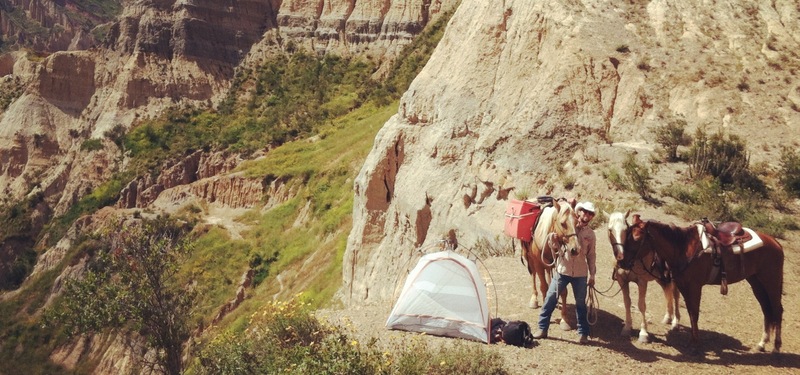It is just after 9pm. I am exhausted, hungry and cold. As I wait for the final border official to stamp my documentation so I can finally enter Bolivia, my vision slowly starts to go blurry. Then without warning the ground beneath my feet begins moving like waves on the ocean.
“Oh no, I am about to faint” I think to myself.
Having spent the past week trying to get my ponies into Bolivia has not left a lot of time to eat or rest. Everyday has been filled with chaos, confusion and long hours standing. As I brace myself to hit the ground I hear men running out of a government building yelling “Earthquake! Earthquake!”
I was relieved to know my body wasn’t giving out on me, but worried about the magnitude of the earthquake. As we watched the streetlights stop shaking the last waves passed under our feet. I have never felt an earthquake before and it was the most bizarre experience I’ve ever had. It just doesn’t feel natural for the earth to move like that. We immediately heard on the radio that we had felt the waves from a strong quake that hit Chile.
Finally at 9:30pm we were allowed to enter Bolivia through the Desaguadero border crossing. Although the week trying to get in had been horrible, I got to see Lake Titicaca for the first time in my life. Growing up I read Ernesto Guevara describe this beautiful lake so eloquently in his book “Motorcycle Diaries” and how he wanted to settle down on its shores. It turned into a lifelong dream of mine to see this extraordinary body of water with my own eyes.
Lake Titicaca is not only the highest body of water in the world, sitting around 4,000 meters above sea level, it is also the largest lake in South America. If that wasn’t enough, the snow capped Andes sit behind the sparkling blue waters, making you feel as if you were standing inside the most beautiful painting in the world. Unfortunately, South America’s bureaucracy yanked me out of that painting and back into reality. The Bolivian border official, like the Peruvians before him, demanded that the horses be trailered immediately out of the country.
“You can only transit through Bolivia on your way to Brazil. You will have seven days to get to the Brazilian border,” a Bolivian official said to me.
I passed him an American fifty-dollar bill. He smiled at me and said, “Okay, three weeks is the most I can give you.” It wasn’t what I wanted, but I had to make it work.

From Desaguadero we made our way to Bolivia’s capital, La Paz. In the city that sits above the clouds I had the pleasure of meeting Ivan Duenas, a cowboy who runs a trail riding business and riding school. Not only did he stop his life to ride with me and Emma in his beautiful country, he also introduced us to his family and friends.
“Filipe I am so happy to meet you and these beautiful horses. It is a pleasure for us to have you here,” he said as we watched Frenchie, Bruiser and Dude roll.
We rode through beautiful valleys, up some of the highest mountain peaks of the entire trip, and across raging rivers.
“Today you will use one of my horses as this trip will be too hard for your horses,” Ivan said.
Since my ponies are not used to this altitude, pushing them too hard could harm them. Horses need to expand their lungs when they work in such high altitude, something only months of acclimatization will achieve. Since the Bolivian officials had put a date on my exit from the country, riding Ivan’s ponies through the highest points was my only option.
“My horses are used to living at close to 5,000 meters above sea level, this is easy for them,” he said.

I had a great time with Ivan getting to see his country and can’t thank him and his family enough for all of their help and love.
